Claim and Start Editing an RPA Process in MuleSoft RPA Manager
Learning Objectives
After completing this unit, you’ll be able to:
- Navigate MuleSoft RPA Manager’s team and individual backlogs.
- Identify an approved RPA process to work on.
Team and Individual Backlog Views
The Team Backlog view contains RPA processes that are approved and waiting to be assigned to an RPA designer. Since a designer hasn’t started working on the RPA process, you see fewer options in the view for this phase.
You can access processes in the My RPA module by selecting either the My Backlog view or the Team Backlog view.
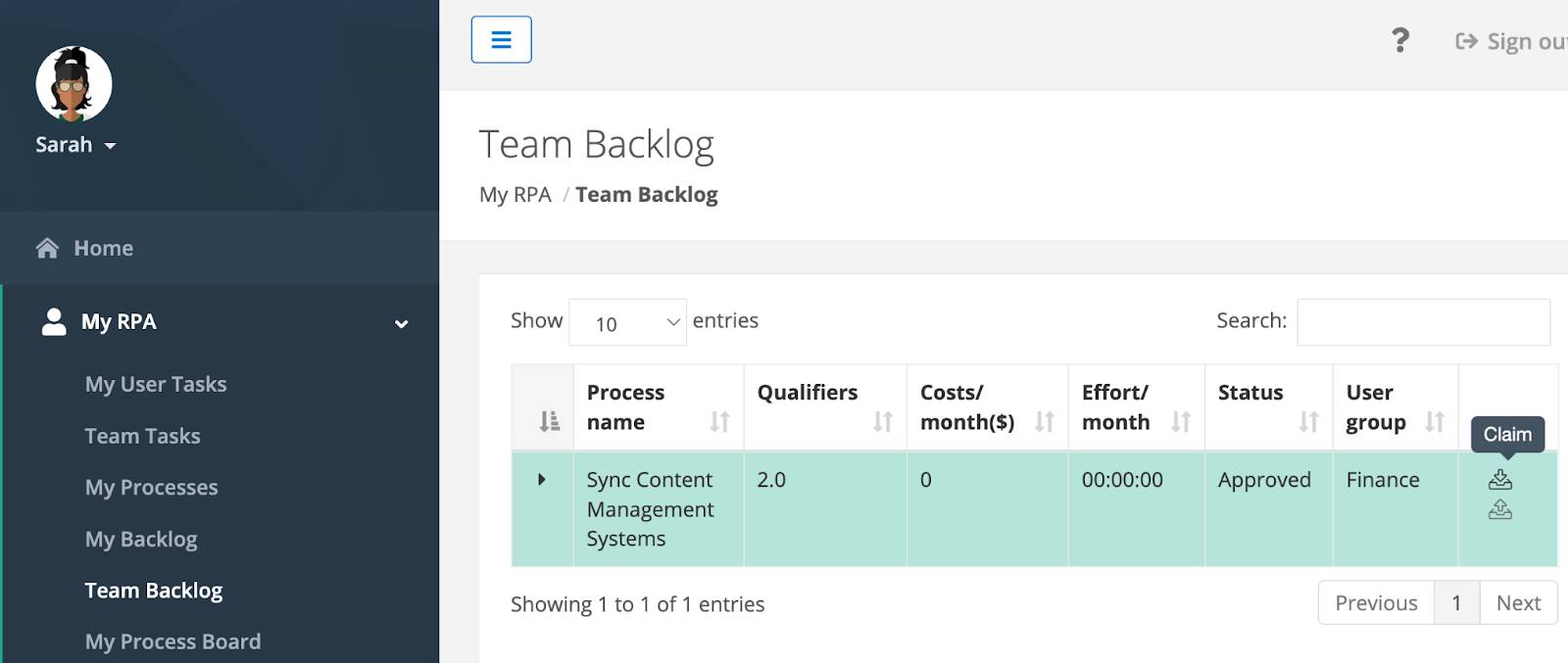
Claiming an RPA process in this view removes it from the Team Backlog view and moves it to your My Backlog view.
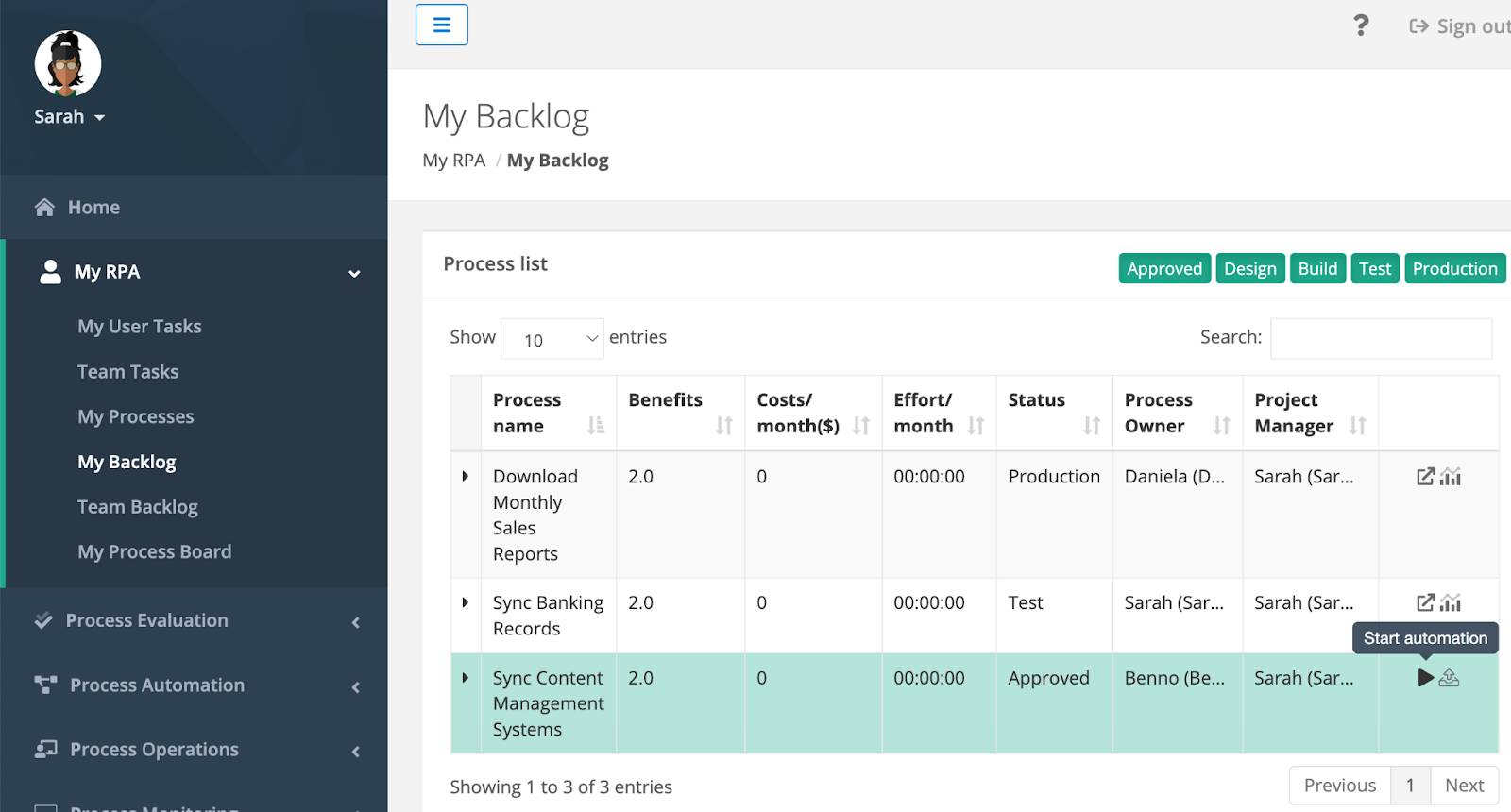
In the My Backlog view, you can begin working on an RPA process by clicking Start automation.
This opens the Create process editor where you configure the process. This involves assigning the process to a category, assigning any required applications for the process, and assembling the process team.
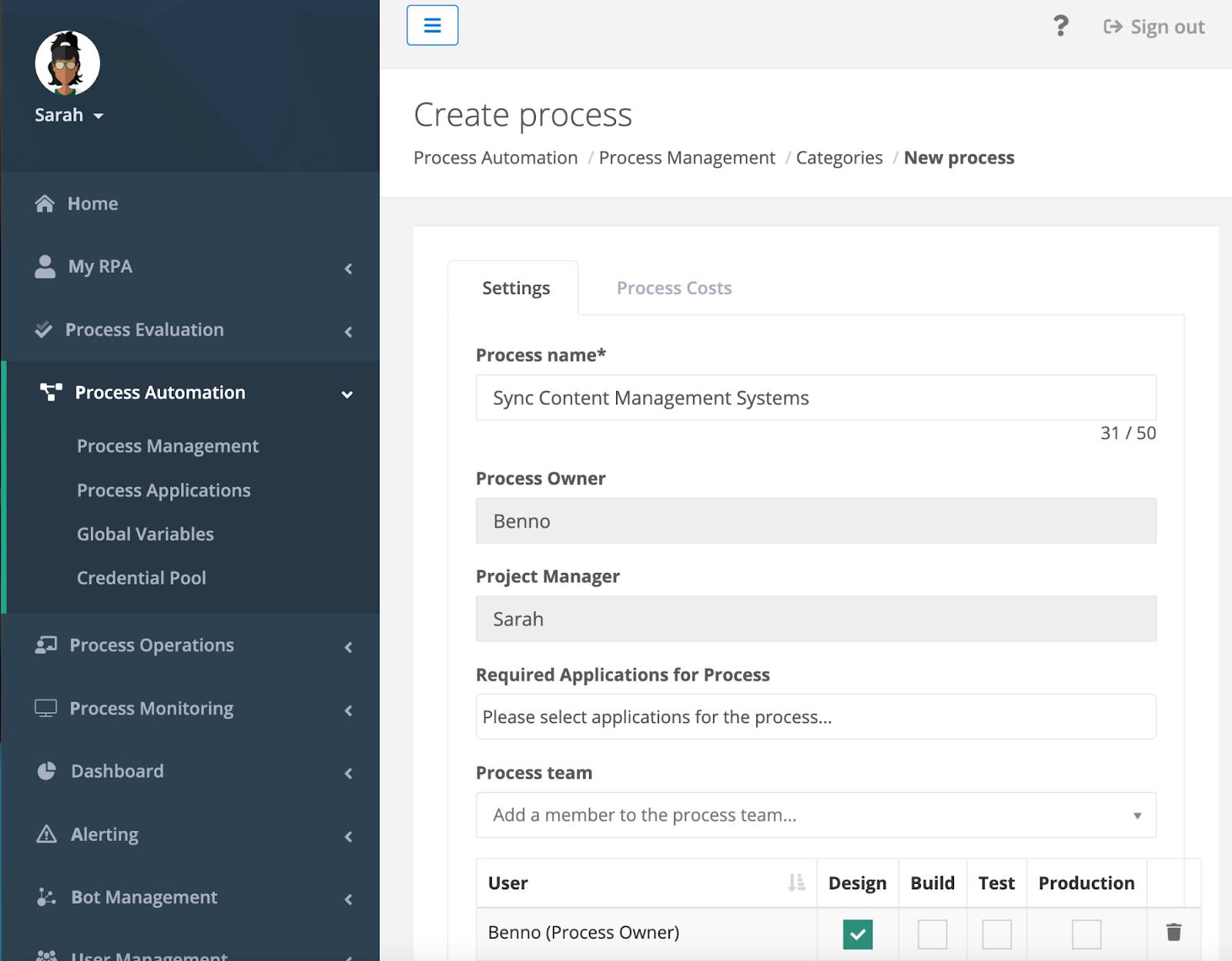
After the Create process page is complete, users are assigned to phases of the RPA process lifecycle. When a user with Design lifecycle stage permission views the RPA process in the My Backlog view, it shows additional options.
The Start automation and Reject icons are replaced with an Open process icon and an icon to view financial analysis of the RPA process.

When a user with this permission clicks the Open process icon to edit the BPMN design in MuleSoft RPA Manager, the RPA process opens in MuleSoft RPA Manager’s BPMN editor.
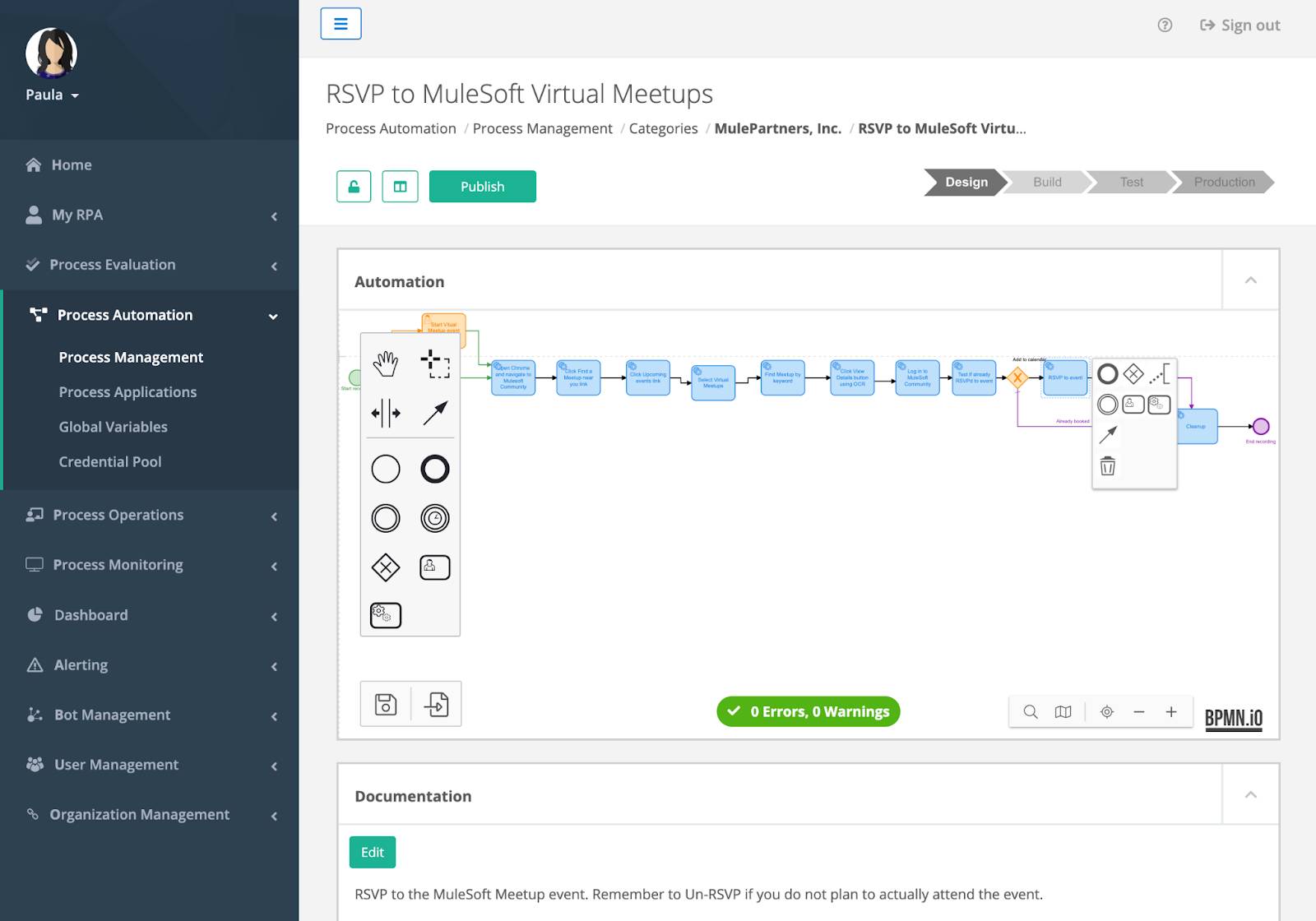
Notice the lifecycle phase tracker in the upper right shows the RPA process is now in the Design phase. The Publish button is also visible, which promotes the RPA process to the Build phase.
When the RPA process is promoted to later lifecycle phases, users can still open the RPA process in the BPMN editor, but it is in view-only mode. However, you can still edit the documentation for each activity in the BPMN diagram.
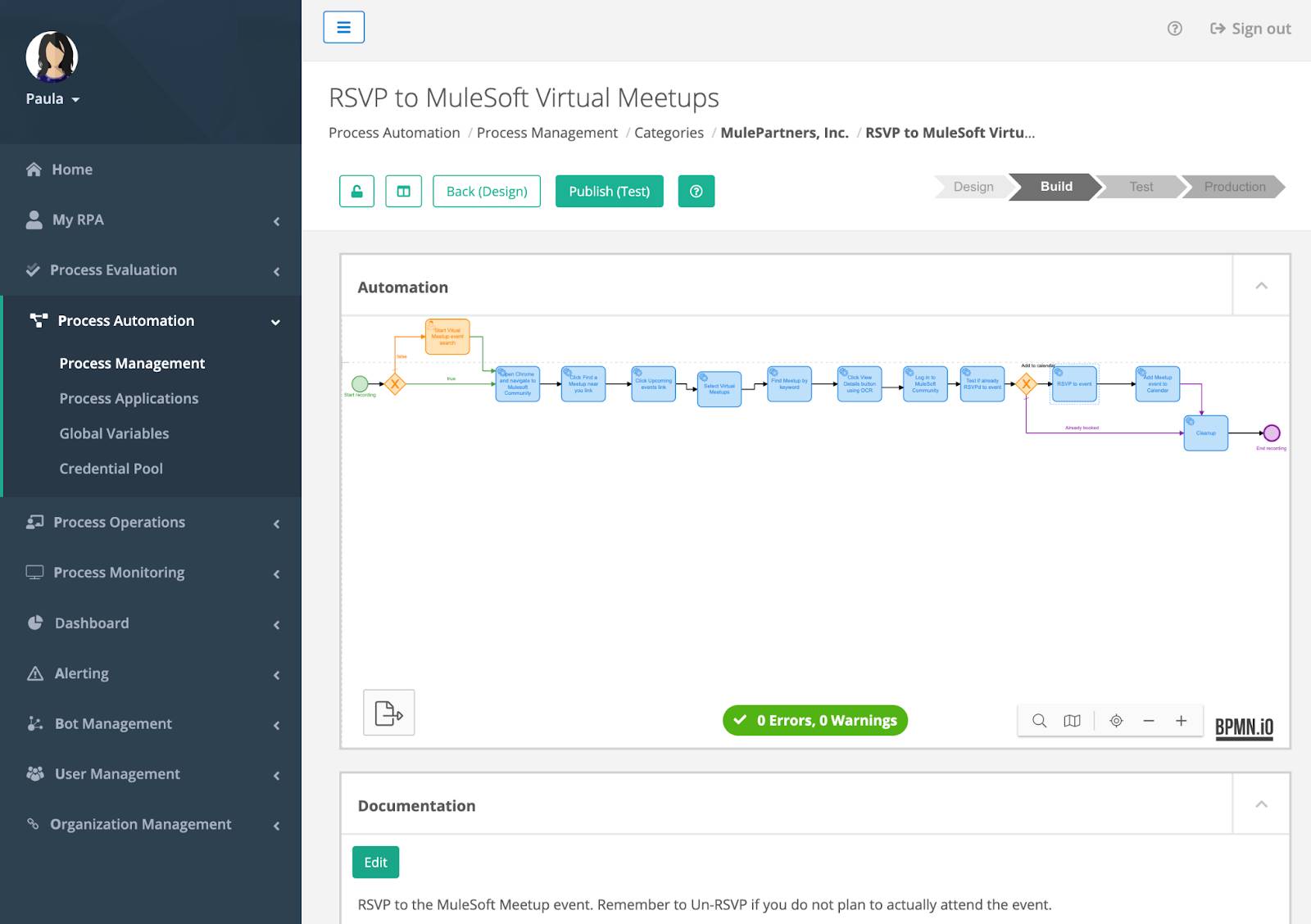
If you want to edit the RPA process BPMN diagram again, you need to downgrade the RPA process from the Build phase back to the Design phase by clicking the Back or Design button.
Identify an Approved RPA Process to Work On
After you log in to MuleSoft RPA Manager, you can browse the My RPA view to see RPA processes you have permission to work on.
This view gives you quick access to all the RPA processes you have permission to see or edit. You get access to an RPA process when you claim it or if you are assigned to the RPA process lifecycle team by an RPA project manager.
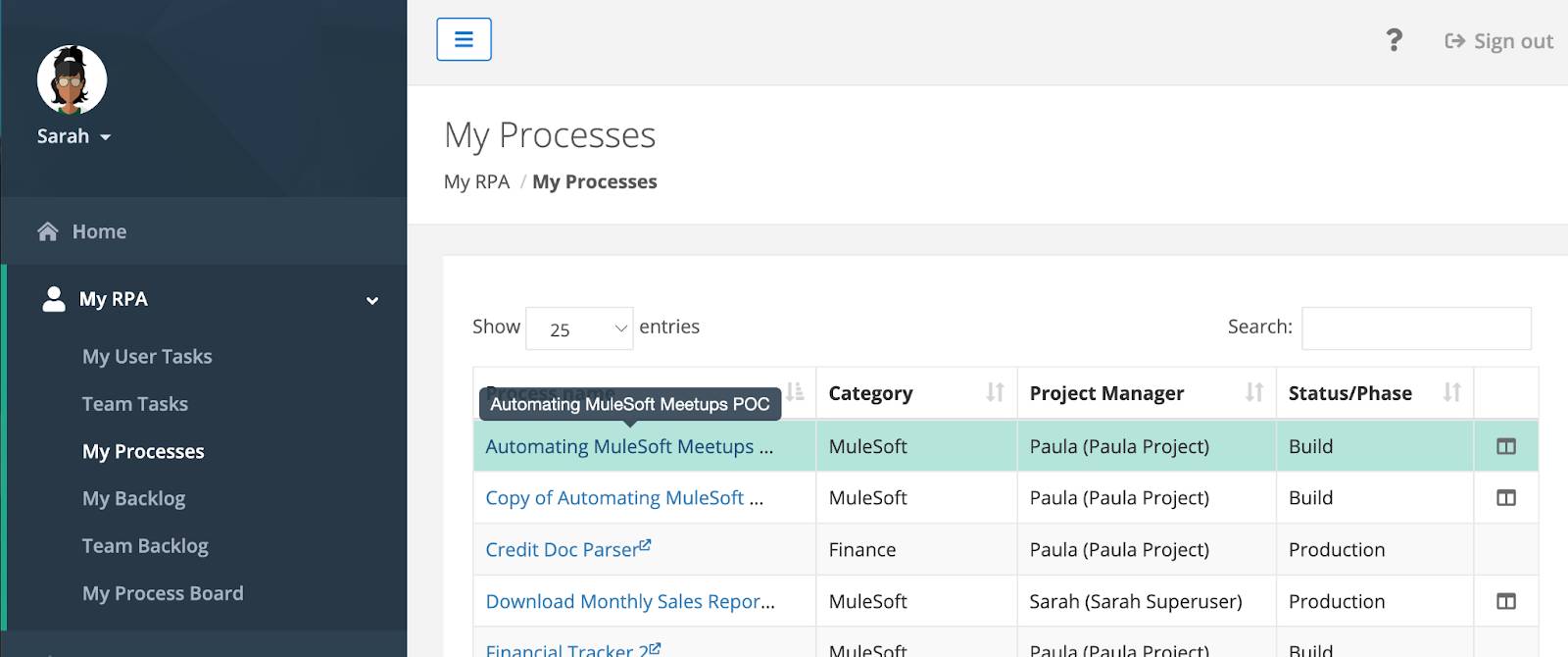
When you click the RPA process name link it opens the RPA process in MuleSoft RPA Manager’s BPMN editor.
If this is a new RPA process, a standard starter BPMN template is created with an unlabeled Start Event connected to a blank Bot Task.
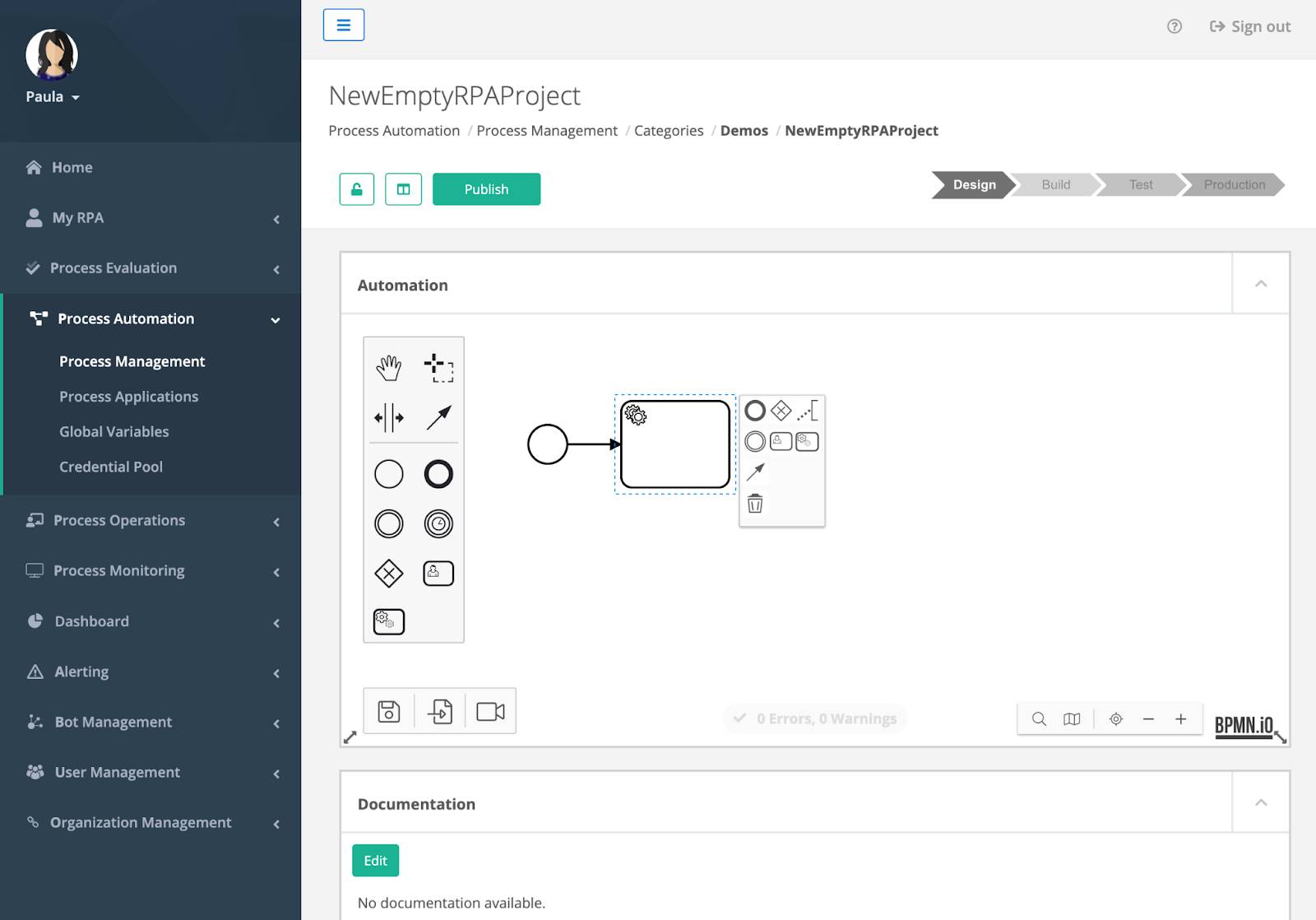

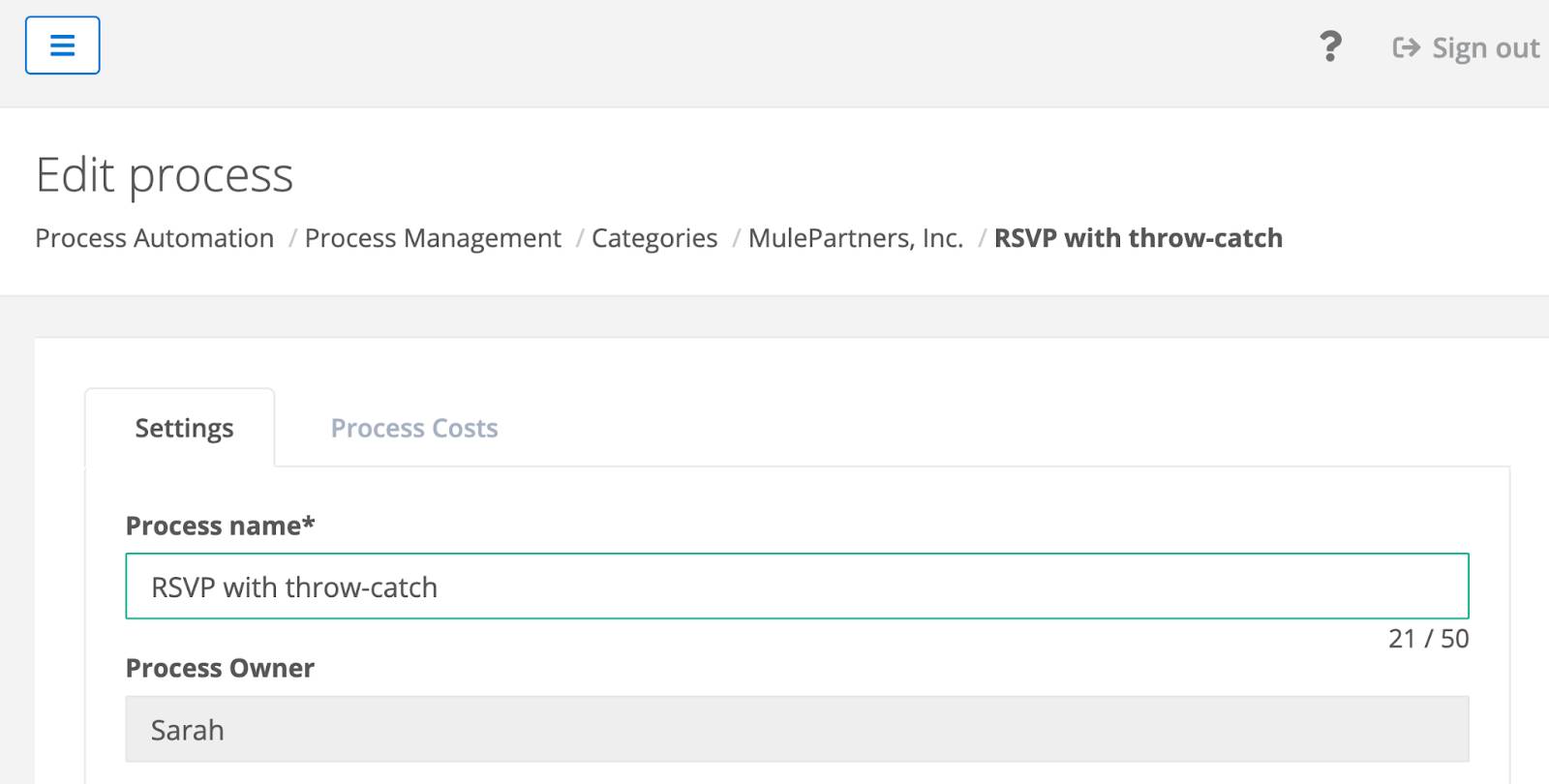
In this unit, you learned how to claim new RPA processes and assign them to your RPA process backlog, how to locate RPA processes in your backlog, and open an RPA process in the BPMN editor. In the next unit, you learn how to edit the BPMN design document.
